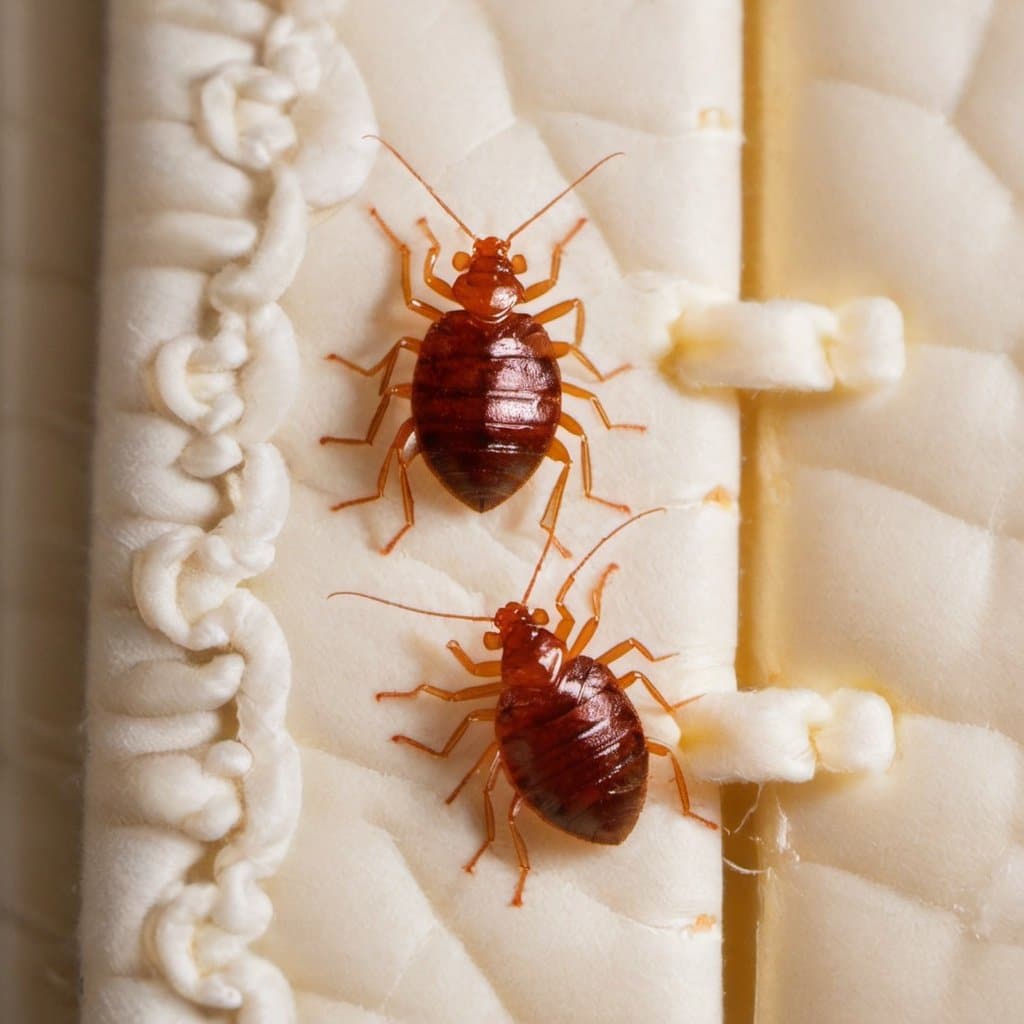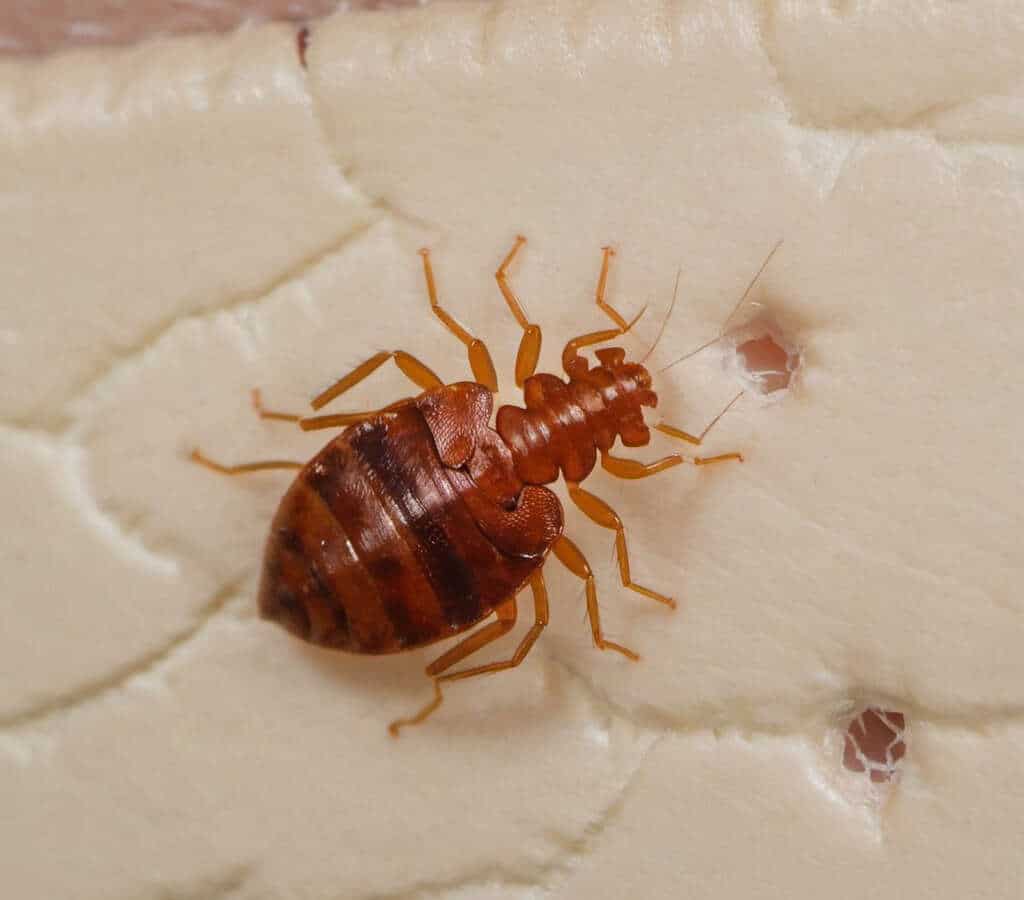Small, itchy bites are a bad sign. Clusters of little orangish, apple seed shaped insects are on your mattress. Red and black spots on your bed. These are the major signs of a bed bug infestation. But how did this happen? How did they get there? How do bed bugs travel? Bed bugs predominant mode of travel is by latching on to our clothes, luggage or other fabric materiel and hitching a ride to your home.
Hitching a ride, as described above is the most used way of travel by bed bugs. These bugs have no wings, so if they aren’t hitching a ride, they are crawling where ever they go. For their size, they are fairly quick. But what is quick? For bed bugs, quick is about two to three feet per minute. They do not jump or leap, so travel does provide a difficulty for them, if they can’t find someone to taxi off of.
HOW MANY ARE NEEDED TO CREATE AN INFESTATION?
Bed bugs reproduce sexually. Some insects have the ability to reproduce asexually. This means that they can make genetic copies of themselves without a mate. Bed bugs can not do this. They do require a mate. But, once a female has mated, she can lay eggs up to eight weeks before she has to mate again. And these insects have no mating season, so they can reproduce year round.
Bed bugs have no social structures such as family, so a bed bug mating with its offspring happens quite often. Once a female has mated, she will find a place to lay and hide her eggs until they hatch. She will lay one egg a day until she needs to mate again. In her lifetime, she can lay up to 200 eggs! If left undisturbed in a controlled heating and air environment such as your home, 95% to 100% of these eggs will hatch. All of this boils down to this… One fertilized female can cause an infestation and it can happen very quickly.
HOTSPOTS
So what kind of places should I be worried about picking up a bed bug? As their name implies, the number one place that they like to be is in beds. This gives them the most access to bare skin that they can feed off of, plus plenty of hiding spots to lay eggs in. That means hotels and motels are a number one contributor. They can even hitch a ride on luggage. Hospitals and doctors offices also have beds, but these beds are bed bug resistant, and the sanitation requirements are usually so high that they seldom get infestations.
These insects can come from other places as well. If you have a visitor in your home with a bed bug infestation in their home, they could be carrying a bed bug. If you live in an apartment building, they can travel from room to room by crawling through the walls. Be wary of second hand furniture, because they can be infested with bed bugs. These creatures are very good at hiding in any fabric material, so anything made of fabric is susceptible. Kids can pick one up from a friend at school. Sitting in a coworkers chair can be a transition site.
WHERE DO THEY COME FROM?
Bed bugs have been with us almost since the beginning of time. Scientists have found the fossilized remains of bed bugs right next to humans from ancient times. It is believed that bed bugs were first parasites of cave bats that worked their way down to humans that shared the cave with them. Many ancient civilizations thought that consuming bed bugs had medicinal purposes. The Greeks and Romans wrote about them, the Chinese had them, and Europe and the Americas had infestations as well.
Before World War II, bed bugs were a common issue. But by the 1950’s, they were all bug gone. The reason? The advent of DDT. This harsh pesticide was used on everything, including beds, and these bugs couldn’t keep up. By the 1970’s, it was realized that DDT is very toxic and not a good thing to apply to beds or anything that comes into contact with us. So, by the 1990’s, bed bugs had made a comeback. Today, modern science has pushed the envelope of safe chemicals and other treatments in order to rid the home of these pests.
HOW DO I GET RID OF THEM?
Bed bugs are very persistent and hard to get rid of. They are excellent hiders, and have become resistant to many chemical treatments. Modern effective treatments require specialized equipment and a high level of expertise. This is why it is best for most people to employ the help of an exterminator experienced in removing bed bug infestations.
Many modern pesticides, and almost all of the over the counter pesticides are pyrethroids. These pyrethroids are derivatives of a natural occurring insecticide found in many plants such as chrysanthemums. In addition to DDT, these insecticides have been used extensively against bed bugs. In fact, they have been used so much, that bed bugs have developed a resistance to them. That means that these insecticides don’t work against them. An experienced exterminator will not only use something that is effective against these bugs, but also will rotate the product to keep these insects from developing tolerances against insecticides.
Hopefully this article has answered the question “How Do Bed Bugs Travel?”. If you are having an issue with bed bugs, or any other pest, contact us. Here at TermMax Pest Control, we are here to help!



